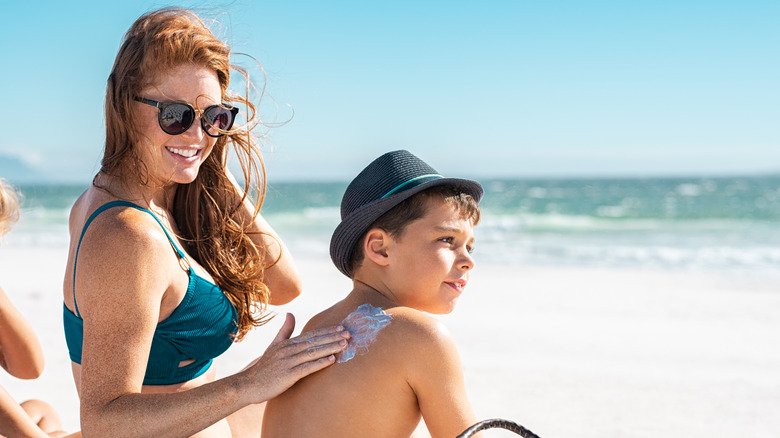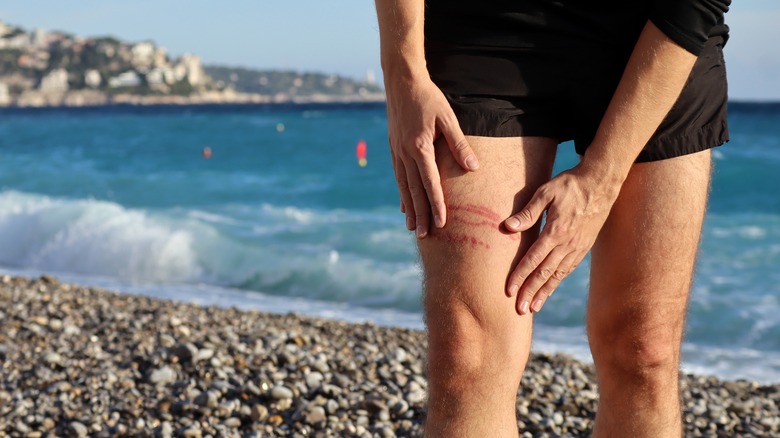There’s nothing more enjoyable than spending a day soaking up the sun and swimming in the ocean. Fun-filled beach days are a popular family-friendly pastime worldwide. For most Americans, beach holidays are the top choice for vacation destinations, according to a 2019 study by Statista.
Most beach days pass without major incidents or injuries, so there’s no need to be nervous to visit the beach. According to the Florida Museum, major incidents like shark attacks and drownings are incredibly rare. The chance of drowning is only one in two million, and the chance of falling victim to a shark attack comes in at one in 11.5 million.
While it’s unlikely you’ll suffer from any significant mishap during your beach trip, it’s not uncommon for minor first-aid situations to arise, especially for families traveling to the beach with children. Even the most minor injury can ruin an otherwise perfect beach day if you aren’t prepared to treat it. It’s essential to be ready for any situation to arise. Whether you’re planning your first beach vacation or visit regularly, you can avoid cutting your special day short by creating a DIY beach safety kit with essentials and basic first-aid supplies so that you’re ready, just in case!
Common beach injuries and their causes

During a day at the beach, you’ll be exposed to elements and conditions that your body might not be used to, and most of the common injuries arise from the beautiful natural surroundings that make visiting the ocean so special. Sand, seawater, and sunlight are the most common factors that cause minor beach injuries.
Sand is unstable ground. While you play beach volleyball or frisbee, you may lose your footing and fall or twist your ankle. Alternatively, as sand sticks to your wet or sweaty skin, it can lead to uncomfortable chafing or rubbing.
Seawater can irritate sensitive skin, as can insect bites and jellyfish stings. Sunburn is generally preventable with sunscreen, but all of the beach fun can make it easy to forget to reapply, leading to painful redness all over the body. Warm temperatures and physical exertion can sometimes lead to dehydration, too, especially if you’re indulging in alcoholic beverages. While uncomfortable, issues like these are usually treatable with basic first-aid supplies and skills.
Pack supplies to clean and protect minor cuts and scrapes

Small instances of broken skin are expected at the beach. Whether you take a slip on the sand and end up with a skinned knee or cut your feet on sharp rocks or coral fragments while swimming in the ocean, these minor scrapes can become incredibly painful when they come into contact with sand and saltwater. Exposure to bacteria can also cause even minor cuts to become infected later on, so it’s essential to treat broken skin immediately.
Keep your DIY beach kit well-stocked with everything you need to clean and dress a minor wound. First, you’ll want plenty of antibacterial wipes or an antibacterial spray. Make sure you wash your hands thoroughly with clean water before using antibacterial wipes to clean a wound, especially if you’re helping someone else. A small set of tweezers can be another valuable addition to treating cuts and scrapes when you need to remove bits of rock or sand.
Keep some clean paper towels in a plastic baggy in your beach safety kit to dry the wound after cleaning, and then apply a high-quality waterproof bandage. You’ll want to ensure that you have a variety of sizes on hand. According to the Miami Herald, Nexcare waterproof bandages are an excellent choice.
Prepare for sunburn and dehydration

Ground Picture/Shutterstock
Even if you’ve loaded up on sunscreen prior to arriving at the beach, sunburn can still happen. The most common reasons for sunburn include improper application and forgetting to reapply after swimming. Keep an extra miniature bottle of sunscreen in your DIY beach safety kit in case you or anyone in your group forgets to bring some along for reapplication.
To treat sunburns at the beach, consider including a small bottle of aloe vera, which can help soothe the pain and itchiness. Depending on your available space, you might also include a packable blanket with UV protection. Coolibar makes a great option that folds up small and offers UPF 50 for under $30.
Dehydration can be dangerous if it’s not treated early. Initial symptoms include feeling thirsty and infrequent urination. As dehydration sets in, you may feel fatigued, lightheaded, or dizzy. Headaches are another common symptom.
In addition to packing plenty of healthy beverages for your beach day, consider throwing a few hydrating products into your beach safety kit. To help recover and rehydrate, include some electrolyte powders or tabs in the kit. Liquid I.V. creates a great powdered formula in individual packets that helps enhance water absorption. If symptoms of dehydration become severe, you will need to seek medical attention immediately.
Treating bites and stings

Andrei Antipov/Shutterstock
Whether you’ve run into a pesky jellyfish while swimming or you’ve been eaten alive by sand fleas or mosquitoes, bites and stings can be super uncomfortable on the beach. Even if you aren’t expecting the area to have flies, it’s a good idea to throw in some bug spray so that you’re prepared, especially if you plan to watch the sunset from the beach because mosquitoes in particular are more active around dawn and dusk.
Hydrocortisone cream is a must-have item in every beach safety kit, and it can treat mosquito bites as well as painful jellyfish stings. Wash the area with warm water if possible, and then apply the cream all over the affected area.
Bee stings are also common, especially if you have sweet snacks around your beach area. If anyone in your crew has a severe allergy to bees, keep their medication handy in your safety kit. Benadryl pills can also help with itching and swelling but might cause drowsiness.
Soothe surf rash and chafing

Famveld/Getty Images
The combination of saltwater, sand, and friction from clothing or surfboards can lead to painful abrasions on the skin. Saltwater tends to soften the skin, making it even more susceptible to chafing after swimming in the sea.
You can soothe this painful condition and prevent it from worsening by including a skin balm in your DIY beach safety kit. Vaseline is a brand of petroleum jelly that helps with chafing, and the company offers a convenient stick version — perfect for on-the-go use. If you hope to avoid petroleum products, an all-natural surf balm makes an excellent alternative. Surfer’s Salve, for example, uses olive oil, beeswax, and other natural ingredients.
Finally, include a small container of baby powder to help keep your skin clean and dry when you leave the beach. For best results on chafed skin, apply baby powder first to help dry up any excess moisture, and then use the skin balm to create a barrier to protect against additional rubbing and allow your skin to heal.
Other items to have on hand

Mukhina1/Getty Images
As you build your perfect beach safety kit, you’ll want to consider any specific needs you or someone in your family might have. Grab a small pill container and include an extra dose of any necessary medications, including inhalers and EpiPens, just in case you run out at the beach or accidentally forget yours at home.
Include a small selection of pain relievers, such as Tylenol, ibuprofen, or Aspirin, just in case anyone suffers from a headache or aches and pains. Instant ice packs can help reduce the swelling of sprained ankles from running around in the sand. Moistened wipes are another possible addition to your kit, as they help clean yourself up and remove some of the salt water before you hop back in the car, especially if there are no public showers onsite.
Armed with your expertly crafted DIY beach safety kit, you’ll be ready for almost any situation, but remember to seek the attention of a medical professional if you suffer from anything more than a minor injury or if symptoms persist after the initial first-aid treatment.

